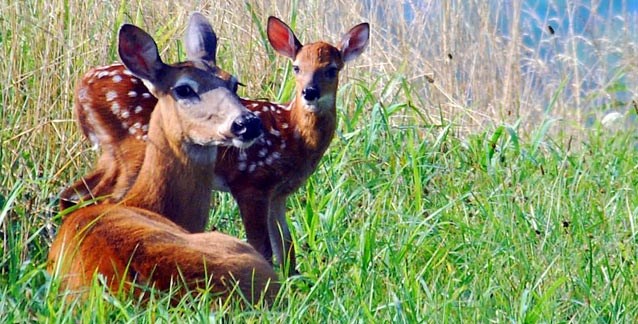
Kenneth Fehrenbach photo White-tailed deer live throughout the Smokies, but are most commonly seen in areas with open fields such as Cades Cove and Cataloochee Valley. Deer living in the southern Appalachians give birth in late June. Newborn fawns have no defense beyond camouflage. Many are lost to predation during their first few days. By their second spring, males begin to grow antlers. They fully develop in August, and in September, the bucks fight for mating rights. Mating occurs in November. The antlers fall off by mid-winter. Every year park animals must be destroyed because of mistakes humans make. Learn how to protect park wildlife. |
Last updated: July 8, 2015
